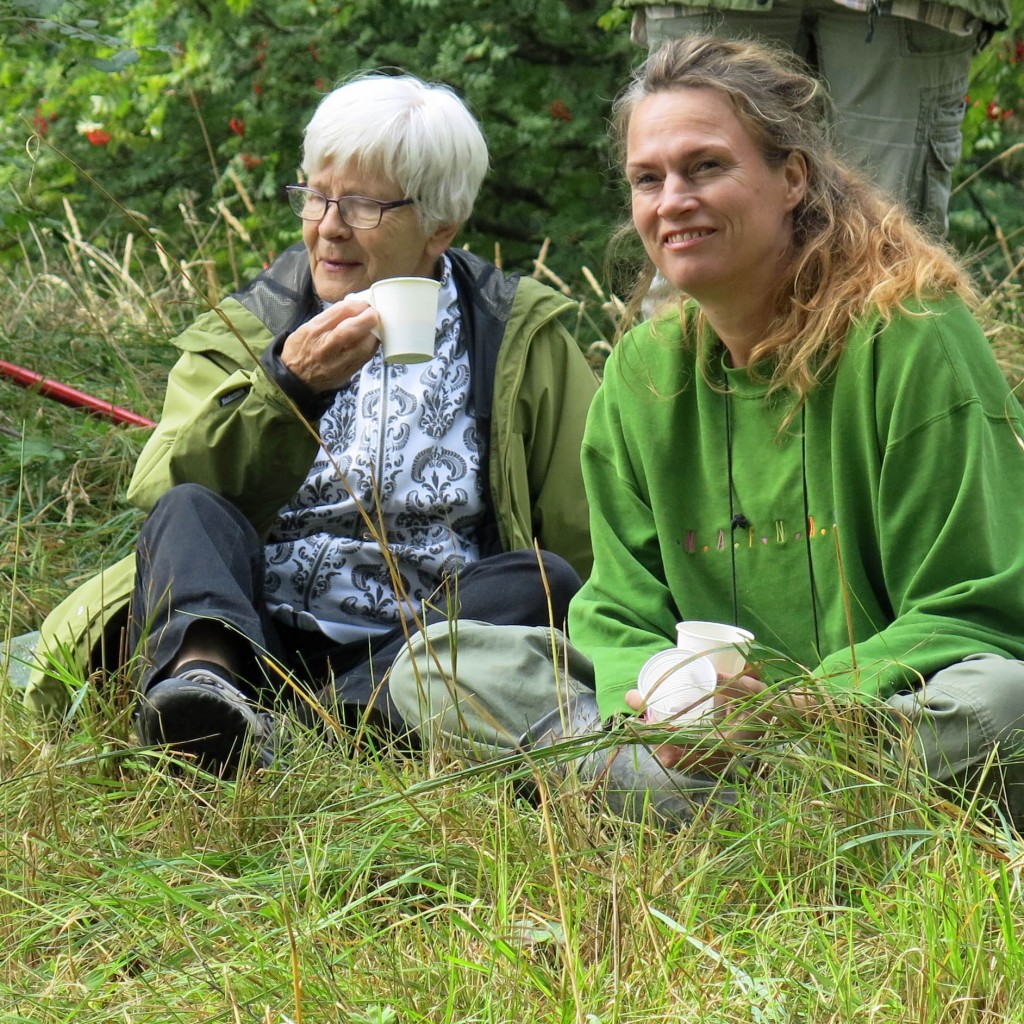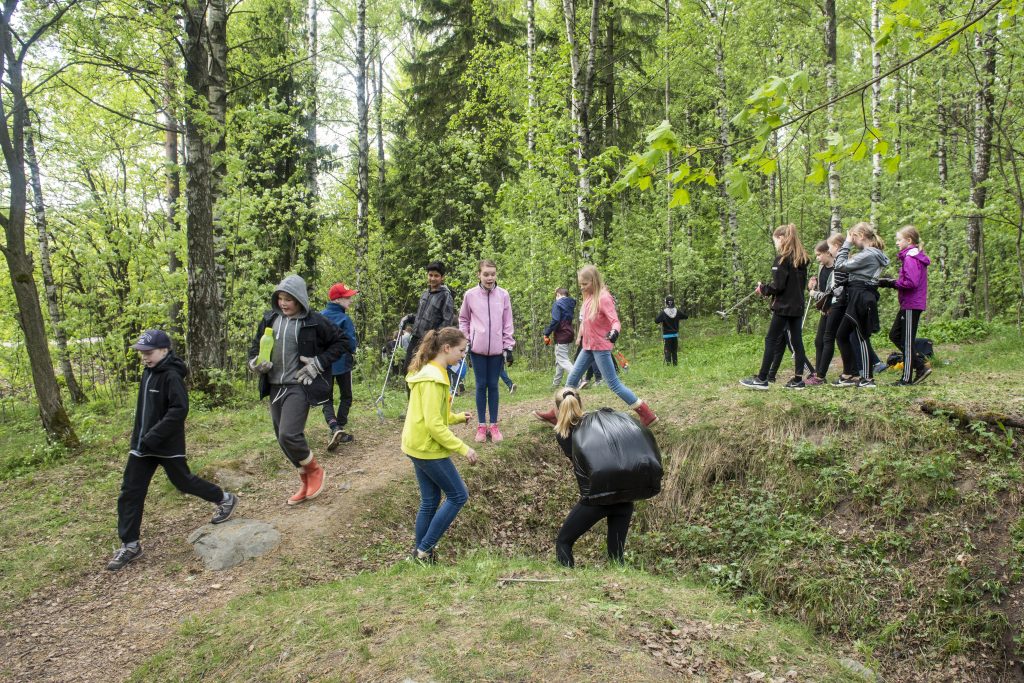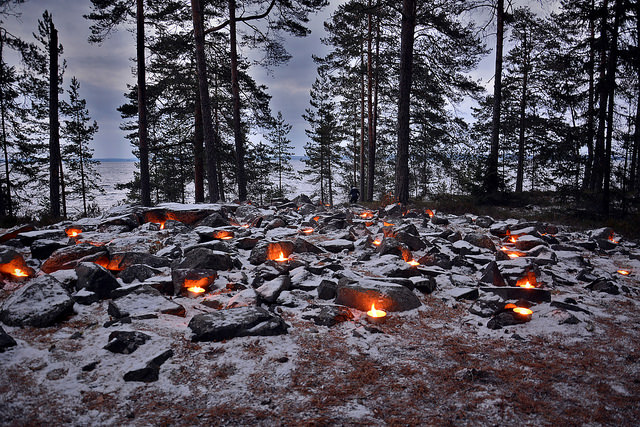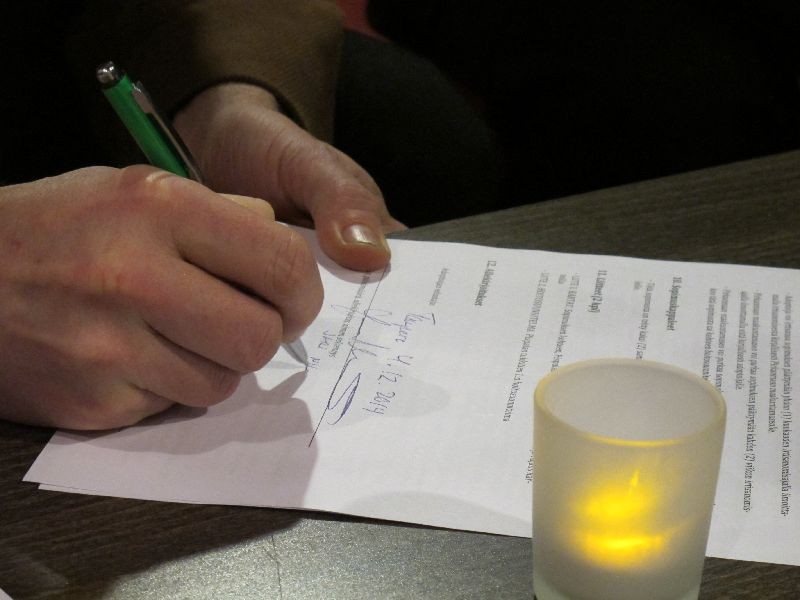Adopt a Monument is a project where the public can volunteer to take care of archaeological sites, historic structures and old buildings – and, above all, it is about involving the public.. It comprises collected data, , making management plans, maintenance, such as clearing vegetation, coating with tar, painting surfaces, or repairing windows, in a variety of environments and locations.
Adopt a Monument is one of the innovative ideas, that the Vapriikki Museum Center has produced in recent years. The concept originally gained impetus in Scotland,with ‘Adopt a Monument’ -running there since 2007, but Tampere soon adapted it to take on a new direction of their own, using a soft protective methodology, which was suited to Finnish needs and situations. It emphasizes Adopt a Monument’s good aspects. The method has cultural flexibility for different conditions and situations. In 2015 it was initiated in Central Finland. In 2016 Adopt a Monument’s efforts were rewarded with the Europa Nostra Grand prize, the highest of the European Union’s cultural heritage honors to be bestowed.. In 2017-2018 Adopt a Monument grew at a rapid pace in Helsinki and Vantaa, as well as Satakunta. 2020 according to Espoo. You can learn more about the timeline of the history of operations here: AM timeline (pdf file).

In Pirkanmaa, Adopt a Monument activities are organised by the Pirkanmaa Provincial museum, located in the Vapriikki museum centre in Tampere., In Central Finland the organizator is the Museum of Central Finland, In Helsinki the Helsinki City Museum, and in Vantaa the Vantaa City Museum and in Satakunta, Satakunta Museum.
Adopting means helping to take care of something. Voluntary groups are taking care for cultural heritage sites and making them accessible. Adoption also means welcoming cultural heritage into the everyone’s lives and performing work for the benefit of their cultural heritage in a tangible way..
Monument means a site, which has either historic or scenic values. It may also be an archaeological site, a building, a structure, or a combination of these in a single cultural entity .

Who can participate in these activities?
The adopter maybe a community, an association, a company or a public entity, such as a school. Some have established an association to preserve the specific interests of the adopted site.. The adopter does not need previous experience, or prior information on cultural issues or environmental specialist skills. Interest and enthusiasm are more than enough. The Adopt a Monument youth work support team works in the museums alongside cultural heritage management professionals: such as archaeologists, building researchers, a building repair expert and a local cultural researcher. Museums also organize educational events and trips, within which one can be trained and meet other adopters.

Picture: Mari Valio/ HCM.
What do we do?
The adopter makes sites available. Important principles are the nurturing of the desire to volunteer, a sense of community, practical caring, planning, and exhibiting tolerance. They can ascribe their own meanings to sites, but the research data should be accessible. Maintenance may include removing vegetation, mowing, and removal of litter according to the maintenance plan.
Mainentance of built heritage may include small and simple restoration- as these kinds of renovation works are of great importance. For example, keeping the roof and gutters clean, removing vegetation along the walls, painting, and refurbishment of windows are suitable tasks for adopters. Monitoring the building’s condition prevents potential serious damage.
The purpose of adoption is also to make cultural environment better known. The adopters may collect scientific information about their adopted site, and raise information boards.

The agreements
Maintenance work is based on, agreements between museums, landowners and adopters. The museums negotiate between parties. Adoption can be a long- or short-term activity. Also shorter projects, and voluntary work events are considered as adoption work. If the maintaining party wishes to end the maintenance, a new adopter is sought.
The agreement may specify that the adopters have a right to use the building or the site as event venues. Agreements templates can downloaded from below:
Archaeological site adoption template (pdf file)
Adoption of a building template (pdf file)

Adoption agreement signing. Picture: Miinu Mäkelä.
Management plan
A new maintenance plan is created for every site or building, and it acts as a handbook when carrying out maintenance work. The plan includes a description of the site, its environment and history. Instructions are followed in monitoring the condition of the site- and maintenance activities. The agreement defines suitable uses of the site, and outlines safety issues, if there are any. The agreement also include contact details of all who are involved.

What kind of building can be adopted?
Our environment is full of objects, which tell about local history and are centrally located, in visible places. Often buildings in need of maintenance and care, are those that are no longer in use.
Adoptable building can be for ex. an uninhabited building or structure. The building would ideally prominent in landscape but small in size, to keep the amount of required maintenance low. A suitable site could be for example a community house, cottage, croft, mill, station, bandstand, kiosk, barn, granary, chapel, milk churn stand, bathhouse, electric distribution substation, bridge or loan granary. Even a small building can be significant!
Do you know a building or structure suitable for adoption? Sen your suggestions: adoptoimonumentti@tampere.fi by e-mail or by telephone 040 801 6815 (Pirkanmaa), 040 334 7012 (Helsinki) or 014 266 4357 (Central Finland).

Would I adopt an archaeological site?
Archaeological sites are often difficult to detect and not well known, and their significance is not always understood. However, they are an integral part of our history. Archaeological sites suitable for adoption are, for example, hillforts, stone fences, burial mounds, hunting pits, ancient dwelling places, cremation cemeteries, and fortifications.
The Finnish Heritage Acengy maintains a register of all archaeological sites where you can check, whether there are sites near your residence. Museums (see. the page Contact) also take suggestions, and check whether the suggested site is suitable for adoption. A few available sites can also be found on these web pages.

Funding opportunities
Pirkanmaa Provincial Museum has received funding for the launch of Adopt a Monument from the Education- and Culture Ministry in 2013-2015. In addition, funding has been received from the Finnish Heritage Agency, Metsähallitus, and municipalities in Pirkanmaa.
The adopters can apply for funding for maintenance from many different sources.
The national funding bodies are:
– National Board of Antiquities; Tuki muinaisjäännösalueiden hoitoon (applied in autumn)
– National Board of Antiquities; Grants for storing and researching cultural heritage in Finland (applied in autumn)
– National Board of Antiquities; Rakennusten entistämisavustukset (applied in autumn, only for privately owned buildings)
– ELY-keskus; Rakennusten entistämisavustukset (applied in autumn, only for privately owned buildings)
Local funding opportunities are:
– Subsidies awarded by municipalities, such as Alue-Alvari in Tampere
-the subsidies granted by the City of Helsinki
– associations, societies (in particular those dealing with history) or companies
Other funding options:
– Fundraising: events with participation fee, lotteries, fairs and sales
– different group funding options, such as Mesenaatti
Read more
» ”Adoptoisinko monumentin”, Museokello (in Finnish) 2008, p. 16-18.
» ”Ensimmäiset muinaisjäännösten adoptointisopimukset on allekirjoitettu”, Museokello (in Finnish) 2009, p.14-15.
»Johannes Turunen: “Vapaaehtoistoiminta kolmannen sektorin kantavana voimavarana – Tapaustutkimuksena talkootyö Adoptoi Monumentti -kohteissa ja maakuntamuseon kulttuuriympäristöleireillä.“ University of Tampere Master’s Thesis 2017.
Tuija-Liisa Soininen: “Adopt a Monument – the protection of the cultural environment for the people, together with people”. The publication Cultural heritage is our – Citizens participating in decision-making. Europa Nostra Finland, Helsinki 2018.
Cultural Heritage In Action Catalogue Of Good Practices, 2020.


Salut ça va
Je suis Amar Agdour Algérienne ?? kabyle célibataire 30 ans.j un licence en droit de affaires et HSE hygiène et sécurité environnement. Je suis intéressé pour faire volontiers avec vous.
Ce qui m’a motivé à collaborer, c’est l’envie de faire partie d’un groupe, de construire quelque chose collectivement. Travailler avec d’autres volontaires permet de créer des liens forts, d’échanger des idées, et de se sentir utile.
Bonjour, merci de votre intérêt. Nous sommes présents dans plusieurs provinces. Où habitez-vous ?
Cordialement Kreetta